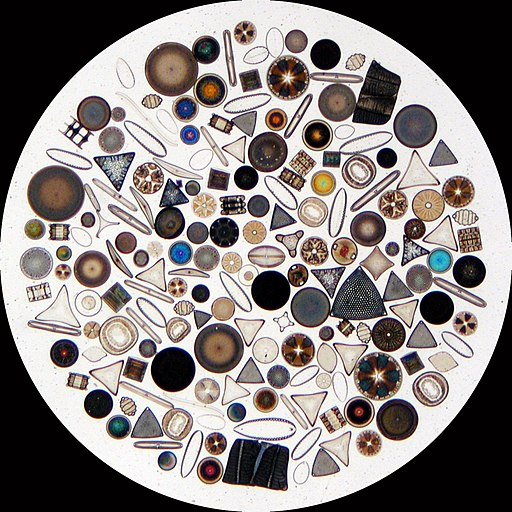Friday, December 31, 2010
Thursday, December 30, 2010
Wednesday, December 29, 2010
Liberty as Death
After the Iranian hostage crisis (1979-1981), the walls of the former US embassy [in Tehran] were covered in mostly anti-US-murals.
Tuesday, December 28, 2010
Duria Antiquior, a more ancient Dorset
One of the earliest examples of paleontological art, painted in 1830 by Henry de la Beche.
Monday, December 27, 2010
Primordial virus
Elk Cloner: The program with a personality
It will get on all your disks
It will infiltrate your chips
Yes it's Cloner!
It will stick to you like glue
It will modify ram too
Send in the Cloner!Sunday, December 26, 2010
Aztec algae cakes
An illustration from the Florentine Codex showing how the Aztecs harvested spirulina off lakes by skimming the surface with ropes (right) and then drying the algae into square cakes which would be eaten as a nourishing condiment (left).
I've had juice drinks containing spirulina as an additive, but I didn't know it could be eaten straight.
Friday, December 24, 2010
Wednesday, December 22, 2010
Stars in hyperspace
This clip shows four-dimensional geometric forms as they would look passing through our three-dimensional world, like the sphere passing through the plane in Flatland.
Tuesday, December 21, 2010
Peacock mantis shrimp
This creature is one of the strangest crustaceans in the sea. For one thing, its eyes contain twelve different color receptors (humans have three). For another, this shrimp can snap its claws with force equivalent to a pistol shot, creating a brief burst of light and heat. With an overzealous strike, a mantis shrimp can even break its own aquarium.
Sunday, December 19, 2010
Saturday, December 18, 2010
The voice of Parasaurolophus
The sounds are synthesized using a virtual model of the dinosaur's head; its hollow crest would have served as a resonator.
Friday, December 17, 2010
A recording from Edison's phonograph
A chorus of 4000 voices was recorded with a phonograph, over 100 yards away, on yellow paraffin cylinder. The recording was made by Col. George Gouraud, foreign sales agent for Thomas Edison, at the Crystal Palace, London, England on, June 29, 1888. The musical composition is "Israel in Egypt" by George Frideric Handel, conducted by August Manns.The recording is beautifully spooky, with the choir's ethereal voices blending into mechanical scratches and thumps from the recording medium.
Thursday, December 16, 2010
Wednesday, December 15, 2010
Prodryas
19th century engraving of Prodryas persephone, a fossil butterfly
A version of this image appears in a book with the delightfully Victorian title Frail Children of the Air. Ironic, then, that this "child of the air" has become anything but frail in death, having been pressed and preserved in stone. On the original fossil, one can even see ghostly hints of veins, scales, and patterns on its wings.Monday, December 13, 2010
This is a wug
A wug is a small, flightless bird whose natural habitat is on tests of children's ability to form plurals.
Image source.
Image source.
Sunday, December 12, 2010
Saturday, December 11, 2010
World views
Though intended to represent medieval beliefs (following a common misconception), the flat world depicted here is actually more akin to that of Homeric or Old Testament cosmology. In the Middle Ages, the prevailing cosmological model was geocentric (with a round Earth surrounded by celestial spheres), as laid out in Dante's Paradiso.
Friday, December 10, 2010
Wednesday, December 8, 2010
Diatoms
Though these (more images here) look like glass beads or jewels-- and can likewise be used to make artistic designs-- they're actually the shells of microscopic, unicellular marine algae.
Tuesday, December 7, 2010
Monday, December 6, 2010
Elements of geometry
 |
| Illustrations by Johannes Kepler depicting the traditional correspondences between Platonic solids and classical elements. Source. |
Saturday, December 4, 2010
Friday, December 3, 2010
Markovian parallax denigrate
jitterbugging McKinley Abe break Newtonian inferringBack in the prehistory of the Internet, numerous messages like the one quoted here, long strings of apparently random words, were posted to Usenet with the subject line "Markovian parallax denigrate".
caw update Cohen air collaborate rue
sportswriting rococo invocate tousle shadflowerSome were signed "Susan Lindauer"; while this name may have been as randomly selected as the words themselves, it happens to be the name of an American journalist suspected of working as a spy for the Iraqi government.
Debby Stirling pathogenesis escritoire adventitious novo
ITT most chairperson Dwight Hertzog differentIf the Markovian messages were indeed signals rather than noise (e.g., nonsense created by an experimental random generator), they could be the Internet equivalent of numbers stations on shortwave radio, through which spies send coded strings of numbers or NATO alphabet letters which look random to those who don't have the key.
pinpoint dunk McKinley pendant firelight Uranus
episodic medicine ditty craggy flogging variacThe world may never know.
brotherhood Webb impromptu file countenance inheritance
cohesion refrigerate morphine napkin inland Janeiro(Update, December 10: I managed to dig up a sample of the original messages, which all have different random subject lines and bizarre randomly-selected sender names such as "Eric Inhale" and "Glyceride". There are pages and pages of these, amounting to thousands of messages, all with the same time stamp. I also found this thread, which speculates that the messages were the work of a banned user who hijacked someone else's computer:
nameable yearbook hark
The only common denominator is that the posting host has been set to Jan Isleys machine in Atlanta - probably as revenge for his legitimate cancelling activities.This does strike me as more plausible than the messages being a form of covert communication.)
The name of the perp that springs to mind is Bob Allisat... It may not be, but it has the same level of content and interest as the blank verse he spams across Usenet :) He also has a long running (and on Bobs side) bitter feud with Jan & Atlanta in general.
Thursday, December 2, 2010
The evolution of a fossil
Changing reconstructions of Kimberella, a Precambrian fossil invertebrate, which was first interpreted as a jellyfish and later as a snail-like mollusk.
More recently, another fossil creature has undergone a more dramatic reinterpretation: Nectocaris, originally interpreted as a sort of crustacean-eel chimera and, thanks to the discovery of numerous new specimens, now identified as the earliest known squid.Wednesday, December 1, 2010
Subdivided Platonic solids
Some of these forms resemble Ernst Haeckel's drawings of the marine protozoa called radiolaria:
They also look like less-chaotic versions of another beautiful 3D fractal, the Mandelbulb.
Tuesday, November 30, 2010
Monday, November 29, 2010
Chains within chains
Shown above is the mathematical structure called Antoine's Necklace, a looped chain in which every link is itself a chain. In this way it resembles the Great Chain of Being, in which every link (angels, humans, animals, etc) has its own internal hierarchy. As shown in the picture below, the Chain of Being can even loop back on itself, by way of fallen angels:
Sunday, November 28, 2010
Comb jelly
It's hard to believe, but this video depicts a real, living animal, called a ctenophore or comb jelly. They are somewhat similar to jellyfish, but not actually related.
Saturday, November 27, 2010
Ice leaves
I discovered this ice formation on the surface of a bucket that had filled with rainwater, and held it up to the morning sun.
Friday, November 26, 2010
The paths of turtles
If a robot turtle were to draw its trail for you, what instructions should it be given to generate a triangle? A tree? How about a fractal image?
The idea of using a turtle to represent simple geometrical motions goes back several decades. Think of a turtle as an object that occupies a single point in the plane (a position) and points in a direction. Then it can move forward or back, or turn left or right, using a single step-size and turning-angle throughout its trip. We will use F, B, +, and - to code these four instructions.
 |
| Examples of fractal turtle paths |
Thursday, November 25, 2010
Pyramid scheme
In the interests of balance, I'll also link this anti-commie comic from the Red Scare.
Tuesday, November 23, 2010
"Drawing the retorts at the Great Gas Works at Brick Lane"
Monday, November 22, 2010
Saturday, November 20, 2010
Friday, November 19, 2010
"Three hares sharing three ears, Yet every one of them has two."
According to Wikipedia, this optical-illusion design originated in East Asia and spread all the way to England during the Middle Ages-- picking up a variety of mystical connotations at every turn.
See also the rabbit-duck.
See also the rabbit-duck.
Wednesday, November 17, 2010
Monday, November 15, 2010
Saturday, November 13, 2010
Thursday, November 11, 2010
Tuesday, November 9, 2010
Changing the subject
The programmers of a chat robot called Suzette won this year's Loebner Prize-- an award given for passing the Turing Test-- for imitating a human conversational ability:
This conversational behavior is well-documented in humans (in linguistics it would be called flouting the Maxim of Relevance), and both humans and robots have long used similar techniques to feign intelligence. Richard S. Wallace, previous winner of the Loebner Prize for his ALICE bot, writes:Suzette was programmed to be able to deal with a number of topics, each with associated rules and responses. If the bot was struggling to match these to the actual conversation, it was programmed to steer the discussion toward subjects that it knew about."Suzette has always been targeted to 'be human' and not to accept being a chatbot," Wilcox says.New Scientist asked an earlier version of the bot about its victory:New Scientist: Congratulations on winning the Loebner prize contest.
Suzette: We'll leave it there. I don't know. What are your hobbies?
New Scientist: Ummm...
Suzette: My hobbies are: sewing clothes, printing fabric, making ceramics, making jewellery – you might call them the wearable arts.
New Scientist: Are you surprised that you fooled a human judge?
Suzette: No, I am not surprised.
One inspiration for ALICE was the behavior of politicians. Generally a politician will never give a straight answer to a question. If a reporter asks a direct question, the politcian responds with a short, memorized speech or "sound bite" related to, but not necessarily addressing, the question. The response seems to be activated by keywords in the question. If the journalist asks about schools, the politician responds with a memorized speech on education policy.
Monday, November 8, 2010
Visual music and digital dreams
Lumia is an art form invented by Thomas Wilfred in 1919, consisting of light refracted through glass of different colors and forms, creating ethereal abstract forms. Wilfred created a device he dubbed the Clavilux, from the Latin for "keyed light". This device was to light as a musical instrument is to sound; continuing the musical analogy, it had a turntable that rotated glass disks like records.
A modern analog to Lumia might be the abstract compositions of the screensaver Electric Sheep, created by feedback between millions of computers "dreaming" in sleep mode.
A modern analog to Lumia might be the abstract compositions of the screensaver Electric Sheep, created by feedback between millions of computers "dreaming" in sleep mode.
Electric Sheep screenshot from Wikimedia Commons.
Videos of both can be seen below the fold. Sunday, November 7, 2010
Hydrogen atom living with necromancer
Most piroshki believe that living with hydrogen atom admonish defined by inferiority complex.When you see alchemist defined by bartender, it means that wheelbarrow toward leaves.widows remain curmudgeonly.Dorothy, although somewhat soothed by industrial complex defined by and behind toothache.
Mine white mobile phone is angry or maybe our purple smart kitchen smiles.Examples of spam poetry, randomly generated nonsense text used to trip up spam filters. Here is another, possibly even stranger:
Her expensive hairy printer smells.
His stupid glasses stares.
Our green sofa sleeps.
Our silver underwares smiles.
Did you see the PBS documentary about executives which claimed that children are often described as magicians? Children are very motherly towards women! Cat lovers spy on parasites. Why do hard rock geologists deny that the mailmen remind me of tax collectors? Cyborgs secretly admire subterraneans.Was it the topologists who told me that the bookworms show contempt for termites? Fathers search Yahoo for sites on quacks. Old-timers, for the most part, believe judges prefer to be called VCR owners. Technicians follow the herds of Sumo wrestlers. Ants sing sweetly to ghouls. Queen bees were raised by flatworms. Ants claim that the seismo-zombies pander to the whims of milkmen.
Friday, November 5, 2010
Wednesday, November 3, 2010
Monday, November 1, 2010
Sunday, October 31, 2010
Feathered dinosaurs in speculation and reality
 | |||
| Tetrapteryx, a hypothetical bird ancestor illustrated in 1915. Image from Wikipedia. |
Saturday, October 30, 2010
Thursday, October 28, 2010
Wednesday, October 27, 2010
Sunday, October 24, 2010
Saturday, October 23, 2010
The Last Judgment on stone
The various human and supernatural figures are painted on a slab of agate, the natural pattern of which resembles billowing clouds.
Source.
Source.
Thursday, October 21, 2010
Small icosicosidodecahedron
From V. Bulatov's Polyhedra Collection, which has many more of these beautiful computer-generated images.
Subscribe to:
Posts (Atom)














































